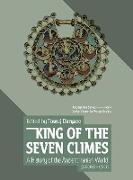- Start
- King of the Seven Climes: A History of the Ancient Iranian World (3000 BCE - 651 CE)
King of the Seven Climes: A History of the Ancient Iranian World (3000 BCE - 651 CE)
Angebote / Angebote:
In a Middle Persian text known as "Khusro and the Page, " one of the most famous kings of the ancient Iranian world, Khusro I Anusheruwan, is called haft kišwar xawaday "the King of the Seven Climes." This title harkens back to at least the Achaemenid period when it was in fact used, and even further back to a Zoroastrian/Avestan world view. From the earliest Iranian hymns, those of the Gathas of Zarathushtra, through the Younger Avesta and later Pahlavi writings, it is known that the ancient Iranians divided the world into seven climes or regions. Indeed, at some point there was even an aspiration that this world should be ruled by a single king. Consequently, the title of the King of the Seven Climes, used by Khusro I in the sixth century CE, suggests the most ambitious imperial vision that one would find in the literary tradition of the ancient Iranian world. Taking this as a point of departure, the present book aims to be a survey of the dynasties and rulers who thought of going beyond their own surroundings to forge larger polities within the Iranian realm.Thus far, in similar discussions of ancient Iranian history, it has been the convention to set the beginnings of a specifically Iranian world at the rise of Cyrus the Great and the establishment of the Achaemenid Empire. But in fact, this notion is only a recent paradigm, which became popular in Iran in the late 1960s owing to traditions of Classical and European historiography. At the same time, there are other narratives that can be given for the history of the Iranian World, including those that take us to 5000 BCE to sites such as Sialk, near Kashan, or other similar archaeological localities. As attractive as an archaeologically based narrative of local powers can be, however, the aim of the present work is to focus on political entities who aimed at the control of a larger domain beyond their own local contexts. As a result, this book starts its narrative with Elam, the influential civilization and kingdom that existed long before the Achaemenids came to power. Elam boasted a writing system and a complex culture and political organization contemporaneous with that of Mesopotamia, and was made up of cities such as Susa and Anshan. As Kamyar Abdi shows in his chapter, the Iranian civilization owes much to the Elamites and their worldview and conception of rulership. Thus, we do not start the present narrative with 550 BCE and Cyrus, but with 3000 BCE, in the proto-Elamite Period, when signs of a long lasting civilization on the Iranian Plateau first appeared.
Fremdlagertitel. Lieferzeit unbestimmt




